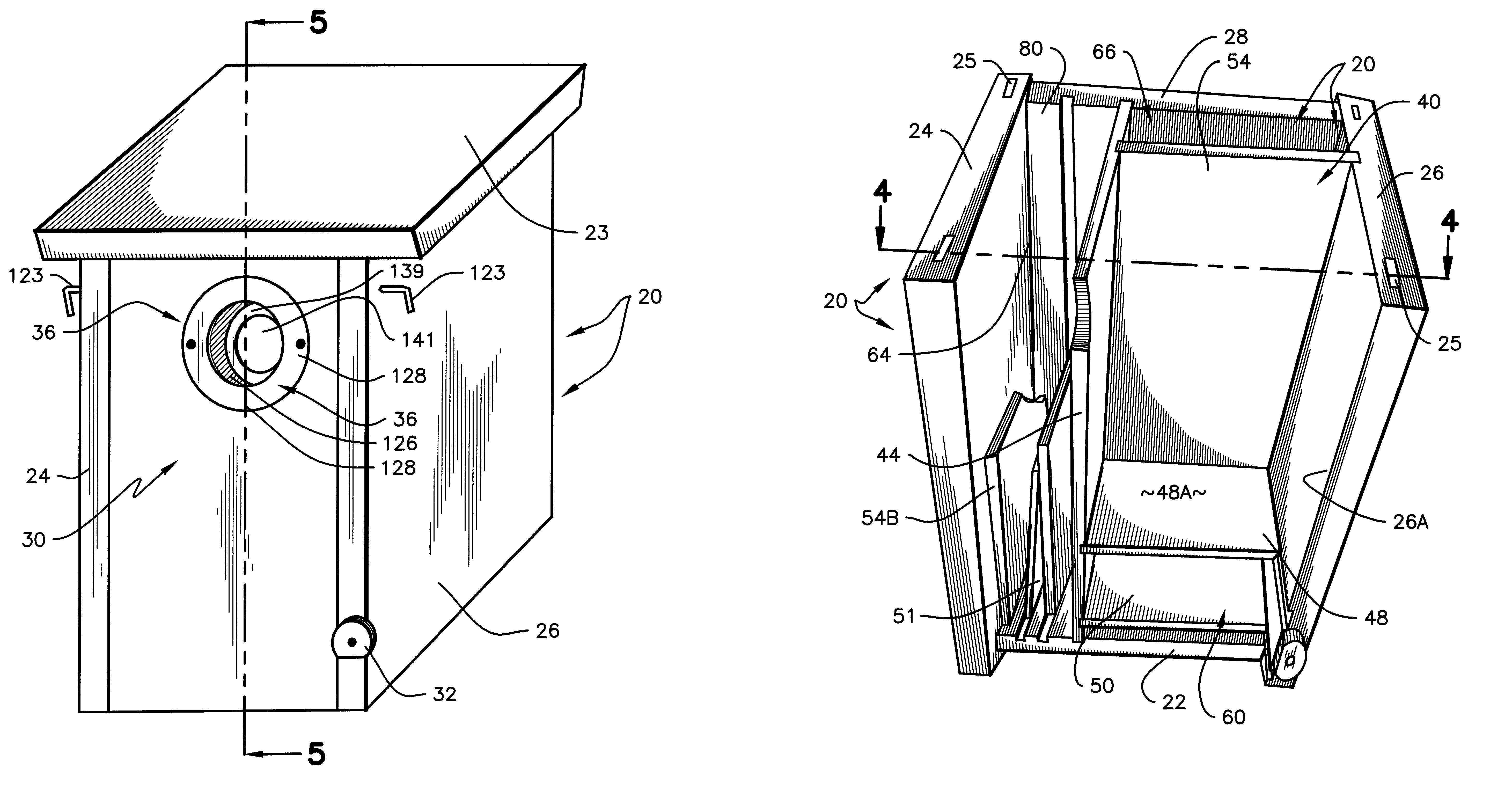Variable volume multi-species bird house
a multi-species, variable-volume technology, applied in the field of bird houses or bird nesting boxes, can solve the problems of affecting the species of birds in the yard, difficult inventory, and unattractive unwanted species, and achieve the effect of rapid and convenient variation of enclosure volume and diameter, and easy variation
- Summary
- Abstract
- Description
- Claims
- Application Information
AI Technical Summary
Benefits of technology
Problems solved by technology
Method used
Image
Examples
Embodiment Construction
Turning now to FIGS. 1-3 of the appended drawings, the reference numeral 20 generally indicates a variable volume birdhouse constructed in accordance with the teachings of this invention. As best seen in FIGS. 1-5, the box-like birdhouse 20 is generally cubicle. It comprises a lower, generally rectangular base panel 22 that is spaced apart from and upper, generally rectangular and inclined roof panel 23. A pair of spaced apart side panels, 24 and 26 (FIGS. 1, 3, 5), form opposite sides of the birdhouse. A generally rectangular back panel 28 extends between and is hooked to side panels 24 and 26. The back panel 28 is perpendicular to base panel but is not latched to it. As best seen in FIG. 2, it is preferred that the back panel dimensions be such that a ventilation slot 55 be formed beneath roof 23. In the best mode, external panels 22, 23, 24, 26, 28 and 30 are made from wood, preferably cedar, that is three-quarter inches thick. The panels can be made from plywood, plastic or othe...
PUM
 Login to View More
Login to View More Abstract
Description
Claims
Application Information
 Login to View More
Login to View More - R&D
- Intellectual Property
- Life Sciences
- Materials
- Tech Scout
- Unparalleled Data Quality
- Higher Quality Content
- 60% Fewer Hallucinations
Browse by: Latest US Patents, China's latest patents, Technical Efficacy Thesaurus, Application Domain, Technology Topic, Popular Technical Reports.
© 2025 PatSnap. All rights reserved.Legal|Privacy policy|Modern Slavery Act Transparency Statement|Sitemap|About US| Contact US: help@patsnap.com



